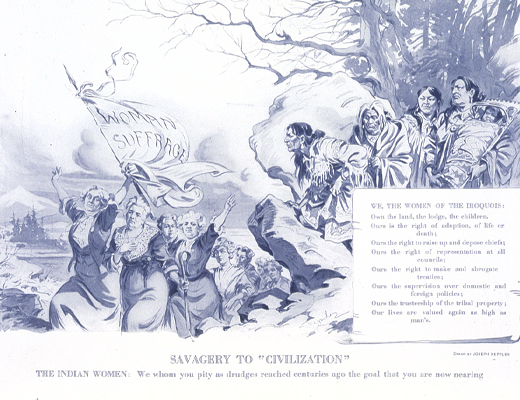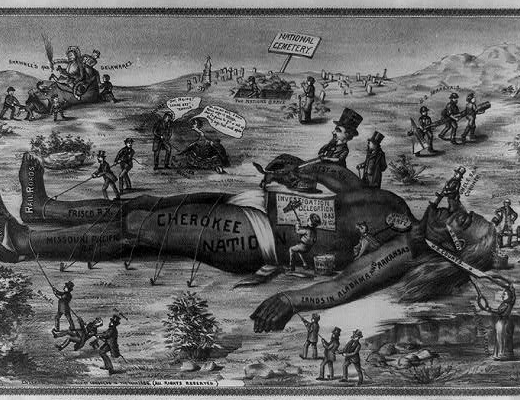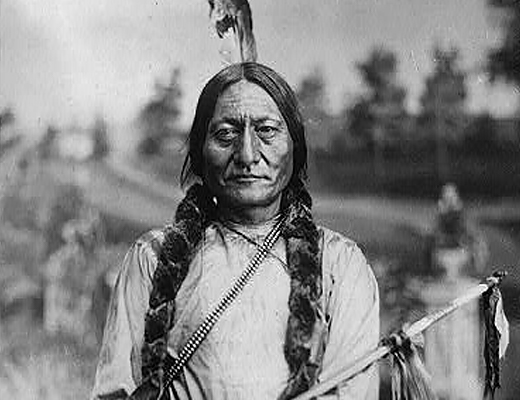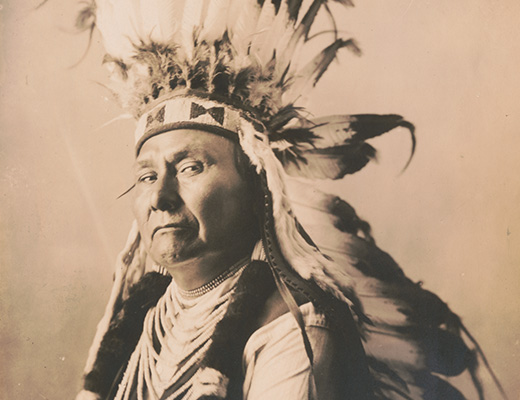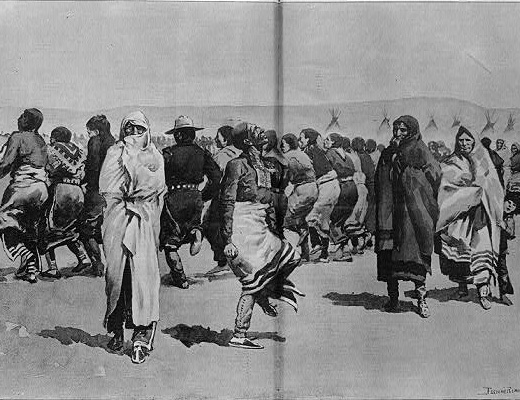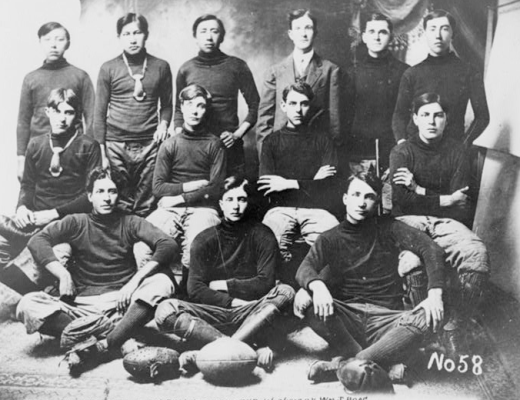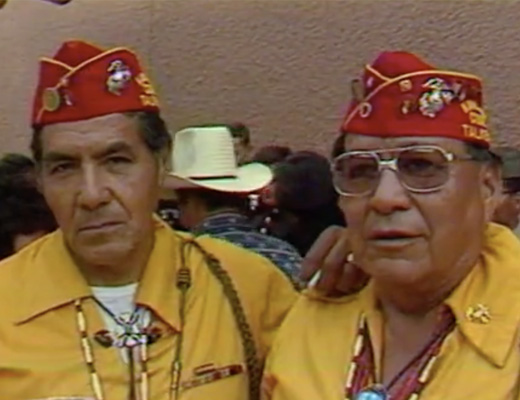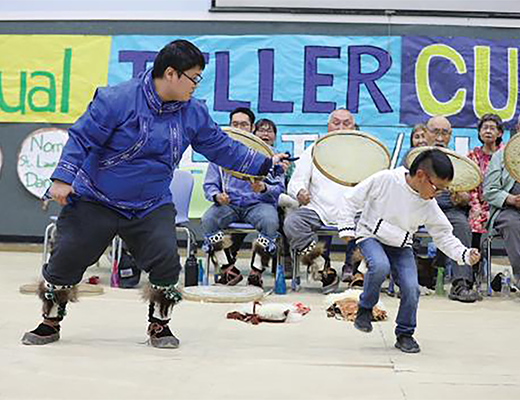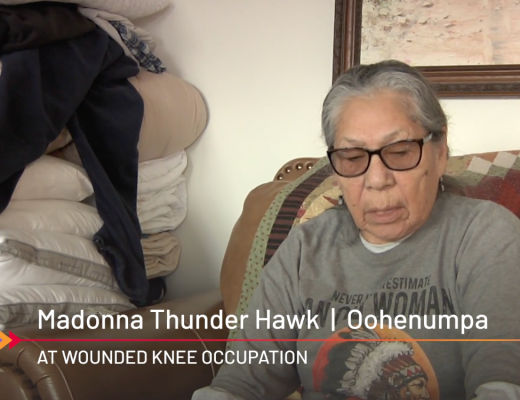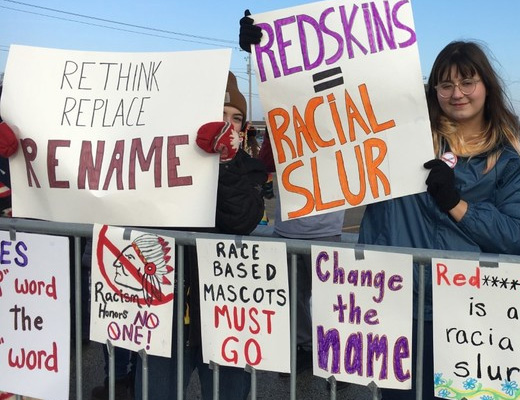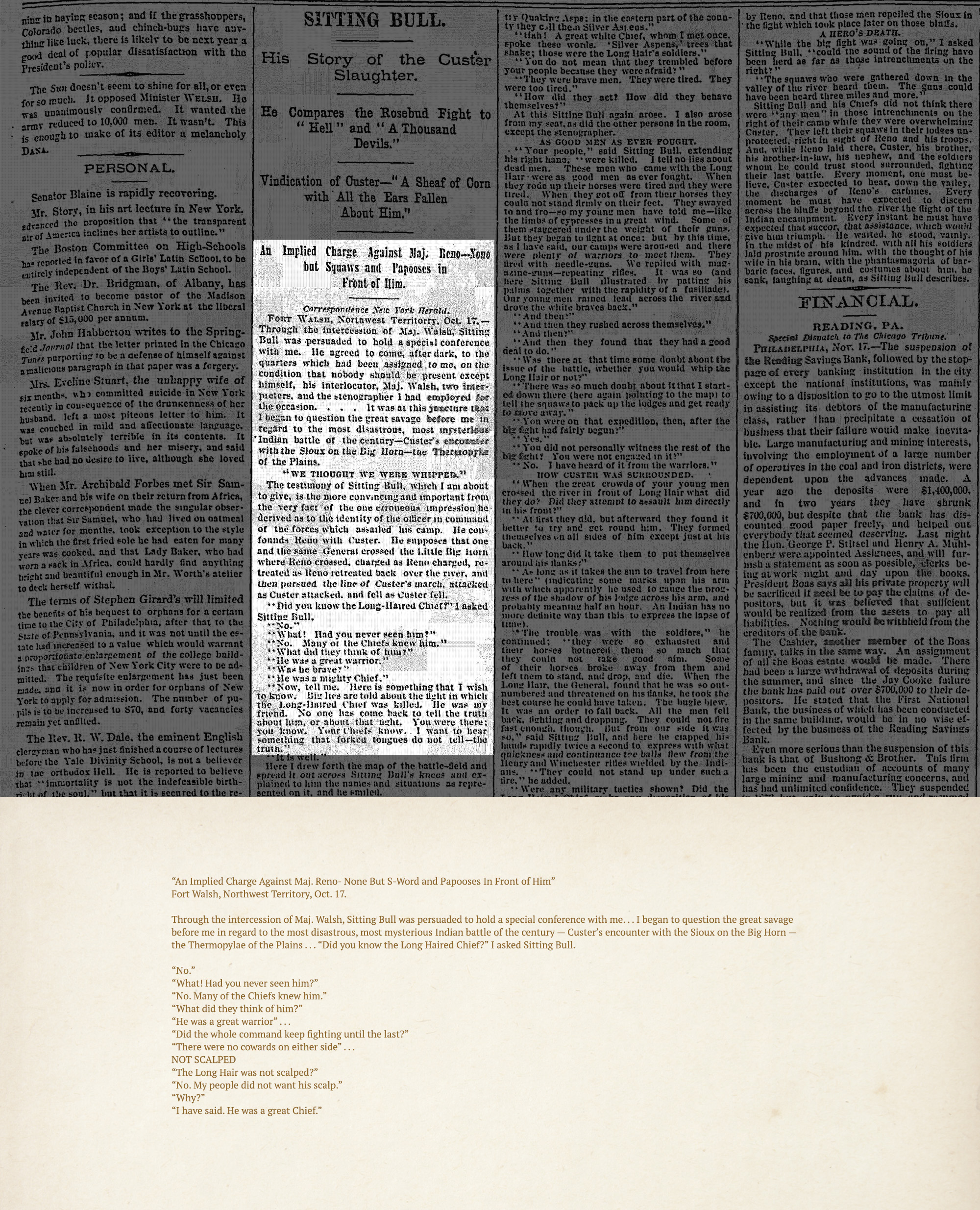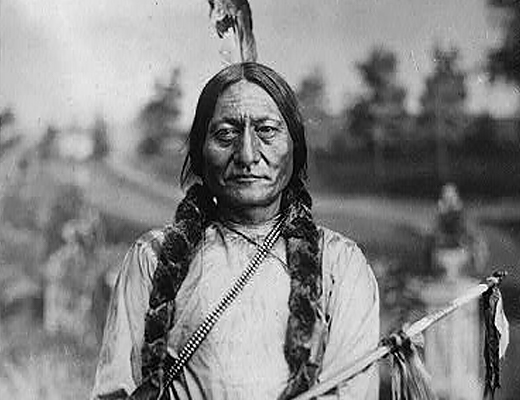The discovery of gold drew settler-colonizers into Plains Indian territory with the U.S. military in tow, led by Colonel George A. Custer. On June 25, 1876, members of tribes from Lakota, Cheyenne, and Arapaho peoples defeated Custer at the Battle of the Little Bighorn, which was also known to many Plains Indians as the Battle of the Greasy Grass. Custer and hundreds of his troops were killed, and the battle is also still commonly referred to as “Custer's last stand.”
Directions:
Use the magnifier to help you read the excerpt from the article “Sitting Bull: His Story of the Custer Slaughter.” Scroll to the second column where it says in bold, “SITTING BULL” and on the following line, "His Story of the Custer Slaughter.”
Note: The article refers to Indian women using a term that many Native people regard as a dehumanizing slur. In 2021, Deb Haaland, Secretary of the Interior, declared the word derogatory and ordered more than 650 natural sites renamed. While the word stemmed from Indigenous language meaning “woman,” it has “historically been used [by white people] as an offensive ethnic, racial, and sexist slur.”
See the Text Version below: “An Implied Charge Against Maj. Reno- None But S-Word and Papooses In Front of Him” Fort Walsh, Northwest Territory, Oct. 17. Through the intercession of Maj. Walsh, Sitting Bull was persuaded to hold a special conference with me. . . I began to question the great savage before me in regard to the most disastrous, most mysterious Indian battle of the century — Custer’s encounter with the Sioux on the Big Horn — the Thermopylae of the Plains . . . “Did you know the Long Haired Chief?” I asked Sitting Bull. “No.” “What! Had you never seen him?” “No. Many of the Chiefs knew him.” “What did they think of him?” “He was a great warrior” . . . “Did the whole command keep fighting until the last?” “There were no cowards on either side” . . . NOT SCALPED “The Long Hair was not scalped?” “No. My people did not want his scalp.” “Why?” “I have said. He was a great Chief.”
Questions
Annotate this Image
DirectionsAnalyze the article in The Chicago Tribune titled “The Massacre.” Scroll to the fourth column where it says in bold, “THE MASSACRE.” Underneath “THE MASSACRE,” it says “Scene of the Slaughter.” Use the annotation tool to take notes on the following questions.
See the Text Version below: . . . It was only when night was falling that the weary troops lay down upon their arms. The infantry had marched 20 miles. The next morning revealed at every step some evidence of the conflict which had taken place two days before. At an early hour the head of the column entered a plain half a mile wide, bordering the left bank of the Little Big Horn, where had recently been an immense Indian village, extending 3 miles along the stream, and where were still standing funeral lodges with horses slaughtered around them and containing the bodies of nine chiefs. The ground was strewn everywhere with carcasses of horses, cavalry equipments, besides buffalo robes, packages of dried meat, and weapons and utensils belonging to Indians. On this part of the field was found the clothing of Licuts. Sturgis and Porter, pierced with bullets, and a blood-stained gauntlet belonging to Col.Yates. . . Not a man has escaped to tell the tale, but it was inscribed on the surface of those barren hills in language more eloquent than words.Two hundred and sixty-one bodies have been buried from Custer’s and Reno’s command. The last one found was that of Mr. Kellogg, correspondent of the Bismarck Tribune, and also, I believe, of the New York Herald.
- What do you notice about the style and tone of the excerpt from this article?
- Does this excerpt sound like news articles today? What is the same? What is different?
- Is this a news article? Is it an editorial? Can you find words and phrases from the excerpt that support your thinking?
Use the toggle button above to switch to Magnify Mode. Magnify mode will help you see finer detail in the image.
Switch back to Annotate Mode to create your annotations with click and drag.

Your Annotations
Puzzler
Directions: Take a look at the different sections of the photograph one by one and answer the question that accompanies each section. Use the parts to then help understand the photograph as a whole.
Source: Library of Congress

Cropped Image 1
What do you notice about this portion of the photo? Describe what you see.
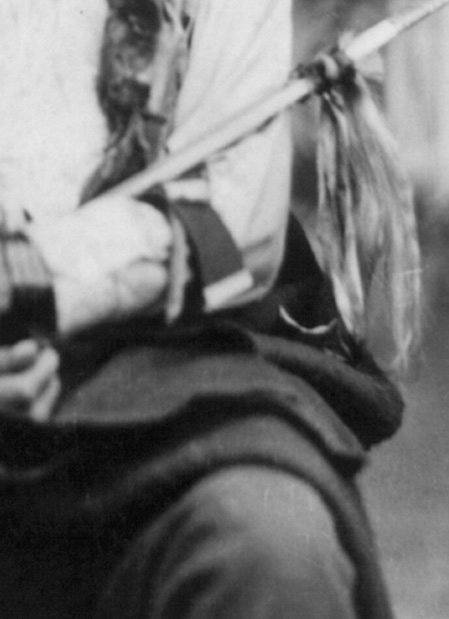
Cropped Image 2
Who is this a photo of? Hint: Look at the writing on the bottom!

Cropped Image 3
How would you describe Sitting Bull’s facial expression? What emotion might it convey?
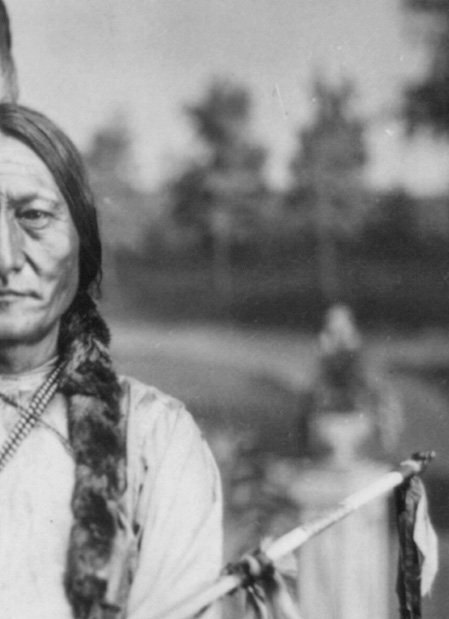
Cropped Image 4
What do you think Sitting Bull is holding?


